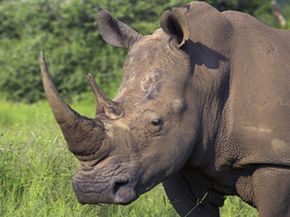Quck answer
Rhinos are known for their aggressive behavior towards anything unfamiliar, including humans. This behavior is a result of their territorial nature and their need to protect their young. Rhinos charge as a way to intimidate potential threats and defend their territory. They have poor eyesight and rely heavily on their sense of smell and hearing, which can make them easily startled and defensive. Additionally, human activities such as poaching and habitat destruction have put rhinos at risk, further exacerbating their defensive behavior. It is important for humans to respect rhinos’ space and avoid approaching them in the wild to prevent dangerous encounters.
Wild Animals

Rhinoceroses are known for their defensive behavior, often charging at anything unfamiliar in their sight. Despite being the second largest group of land mammals on Earth, they feel vulnerable due to their dwindling population caused by illegal poaching. The horns of rhinos, made of keratin, are in high demand in Asia for their ornamental and medicinal uses. Three of the rhino species have two horns, while the Javan and Indian species have only one horn. Their poor vision, coupled with their powerful sense of smell and hearing, causes them to charge at anything that they detect as unfamiliar.
The likelihood of a rhinoceros charging at a perceived threat varies among the five species. Black rhinos, common in Eastern and Southern Africa, are the most aggressive and likely to charge unprovoked. In contrast, white rhinos tend to be more docile, while Javan and Sumatran species are thought to lack aggression altogether. However, even the calmer species have been known to charge on occasion, possibly due to poor vision leading them to run towards a threat. Rhinos may also charge to release frustration, often targeting inanimate objects. A rhino’s temperament and personal history also play a role in its likelihood to charge, with those raised in peaceful environments being less aggressive. Despite a ban on international trade, rhino horn remains in high demand for its supposed medicinal value, despite no scientific evidence to support this claim. Poaching remains a significant threat to all five rhino populations.
The list contains various sources of information about rhinoceroses. These include articles from conservation news, natural history journals, and wildlife organizations. There are also books and websites listed as sources. The information covers topics such as the different species of rhinoceros, their habitats, and conservation efforts to protect them. The list is presented in a format with HTML tags for headings, paragraphs, and images, and it can be useful for anyone seeking information about rhinoceroses.
FAQ
1. What makes rhinos charge at unfamiliar things?
Rhinos are known for their aggressive behavior, particularly when they encounter something unfamiliar. This is because they rely heavily on their sense of smell and are very territorial animals. When they encounter a new scent or object in their territory, they may feel threatened and respond by charging at it. Rhinos also have poor eyesight, so they may not be able to see what they are charging at very clearly, which can result in dangerous situations for both the rhino and any nearby humans or animals.
2. Is it possible to avoid a rhino charge?
While it is difficult to predict when a rhino may charge, there are some things that can be done to reduce the risk of an encounter. One is to stay a safe distance away from any rhinos in the area and avoid disturbing them. Rhinos are most likely to charge when they feel threatened or provoked, so it is important to give them plenty of space. It is also important to be aware of the signs of an impending charge, such as a lowered head or raised tail, and to move slowly and calmly away from the animal.
3. What should you do if a rhino charges at you?
If a rhino charges at you, it is important to remain calm and try to avoid the animal. Running away is not recommended, as rhinos can run at speeds of up to 35 miles per hour and are difficult to outrun. Instead, try to find a nearby tree or other sturdy object to hide behind, or lie down on the ground and play dead. This may convince the rhino that you are not a threat and cause it to lose interest in you.
4. Are all species of rhino equally likely to charge?
While all species of rhino have been known to charge, some are more aggressive than others. The black rhino, for example, is known for its unpredictable and aggressive behavior, while the white rhino is generally more calm and docile. However, it is important to remember that all rhinos are large, powerful animals and should be treated with caution and respect.
5. What can be done to protect rhinos from human encroachment?
One of the biggest threats to rhinos is human encroachment on their habitat. As human populations continue to grow and expand, rhinos are losing their natural habitats and are being forced to live in closer proximity to humans. To protect rhinos, it is important to preserve their natural habitats and to enforce laws and regulations that prohibit poaching and other forms of illegal hunting. Conservation efforts, such as the breeding and reintroduction of rhinos into protected areas, can also help to restore populations that have been decimated by hunting and habitat loss.





Leave a Reply